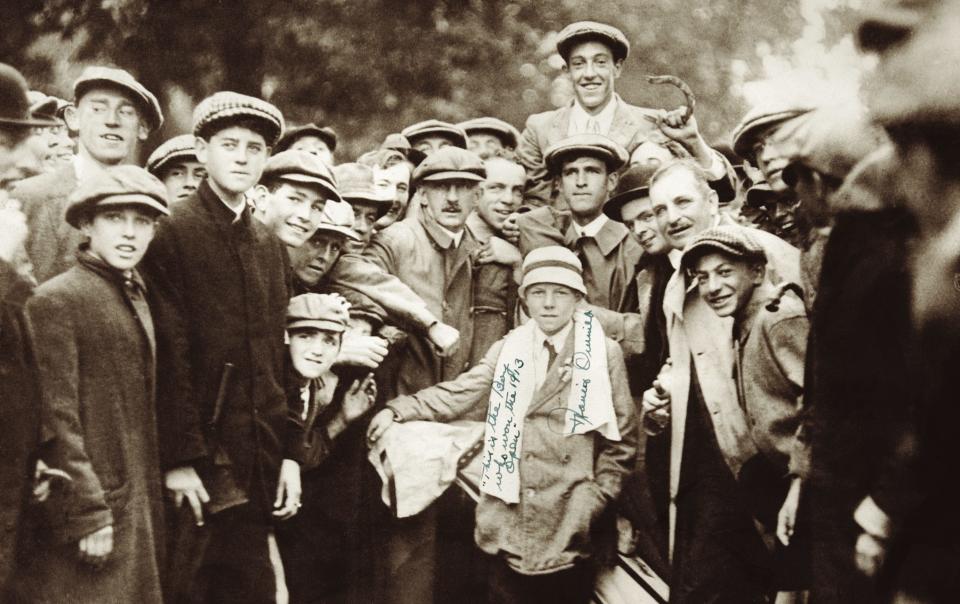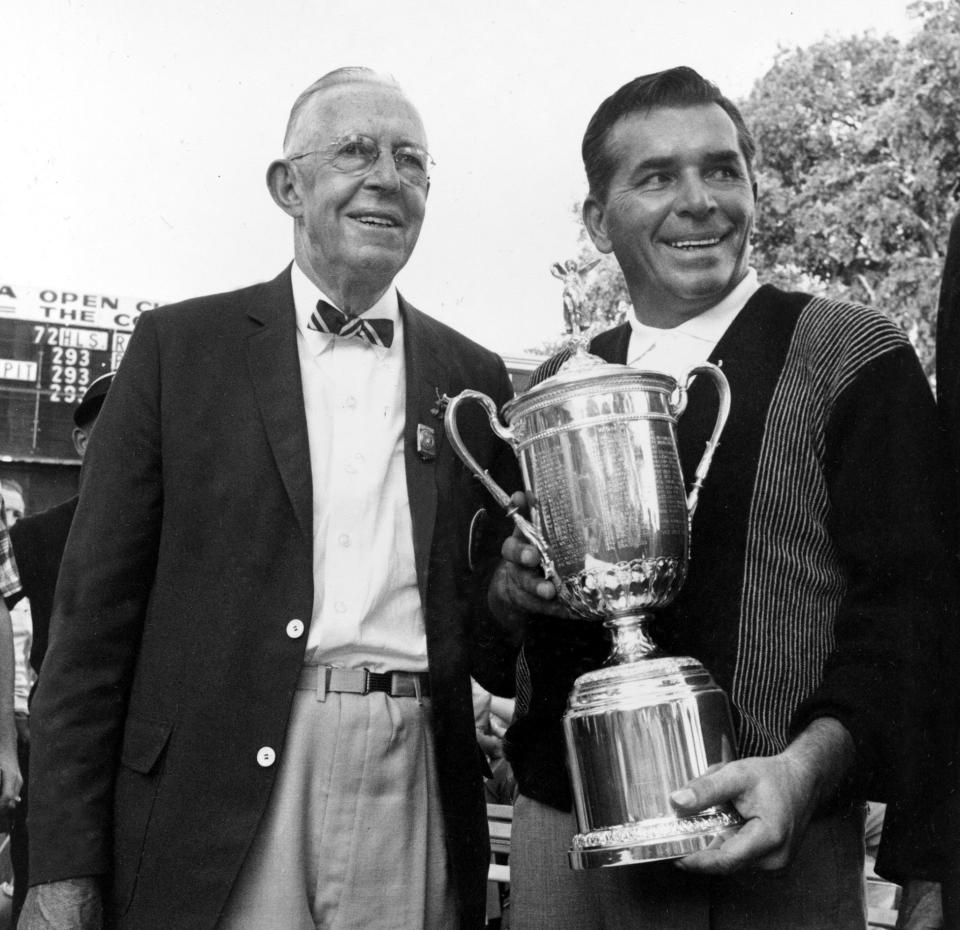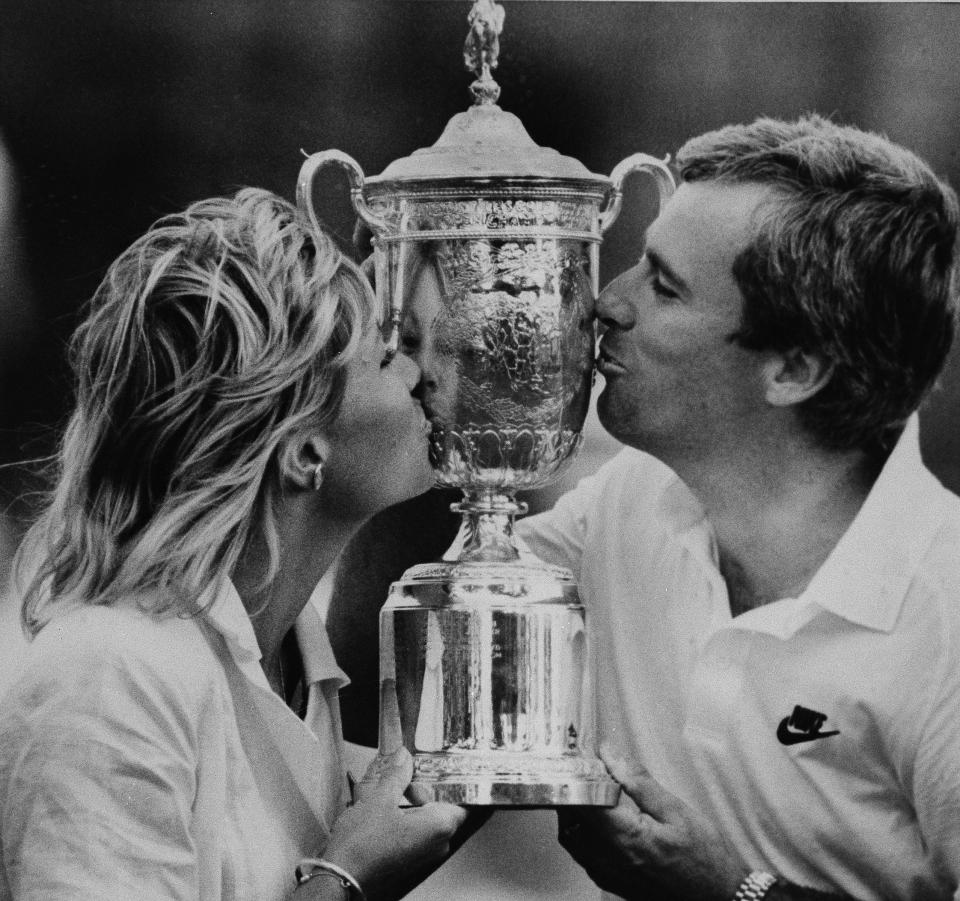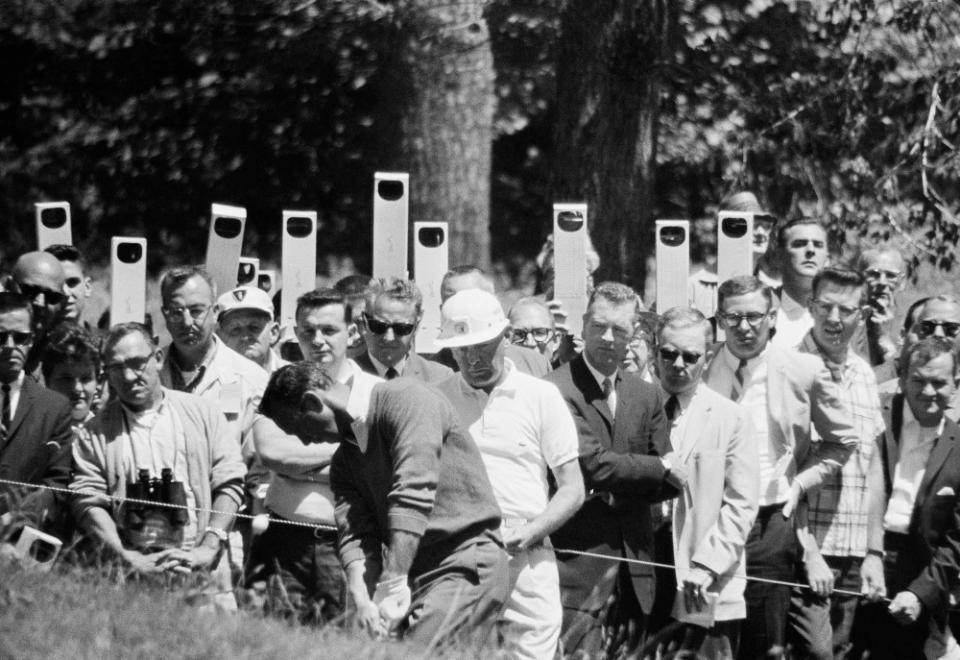Magical 17th hole at The Country Club set for more drama in U.S. Open that began more than 100 years ago with Francis Ouimet

BROOKLINE, Mass. – The opening scenes in what would later become perhaps golf’s greatest storybook ending, a fascinating tale that has resonated for more than 100 years, were set in what can only be called a perfect setting.
Across the street from The Country Club, founded in 1882 and one of the five founding clubs of the U.S. Golf Association, Francis Ouimet grew up in the modest, six-room, 1,500-square-foot home at 246 Clyde Street.
Looking out the window of his second-floor bedroom, he woke to a view of the 17th hole of The Country Club, which he would walk across to get to school and where he would later caddie and fall in love with the game.
And then, at age 20, he became a folk hero and changed the path of the game’s history over the sacred ground outside Boston.
In authoring arguably the biggest upset in the chronicles of golf, Ouimet took down Harry Vardon and Ted Ray, the two best golfers of the time, to win the 1913 U.S. Open in a playoff at The Country Club that drew up to 20,000, mostly blue-collar workers each round.

After winning the 1913 U.S. Open, Brookline’s Francis Ouimet (rear) credited his caddie, 10-year-old Eddie Lowery. Ouimet later dedicated this photo, writing over Lowery’s towel, “This is the boy who won the 1913 Open.”
And as it turned out, it was at the 17th where two of Ouimet’s biggest moments unfolded. In the final round, Ouimet, an amateur who had to be talked into entering the championship by his friends, came to the hole nicknamed “The Elbow” trailing by one shot. At the time, the dogleg-left hole was playing to 275 yards. After reaching the green with his approach, Ouimet made a long birdie putt to tie for the lead and joined Vardon and Ray in an 18-hole playoff the following day after making par on the 72nd hole.
In the playoff, with Ray out of contention, Vardon trailed Ouimet by one when the group arrived at the 17th tee. Vardon tried to cut the corner and wound up in the lone bunker that bears his name. Ouimet found the fairway. Vardon had to lay up and made bogey while Ouimet made birdie again for a three-stroke lead.
Ouimet polished off his startling win on the final hole.
The game exploded across the land. And the 17th took root as the course’s pivotal hole, later home to more magical, game-changing moments to decide championships. If history is prologue, the penultimate hole on the scorecard – which will play out to 373 yards this week for the 122nd U.S. Open and now features four bunkers on the left of the fairway bend and numerous mounds – will play a crucial role in the outcome.
“It’s unique,” reigning PGA champion Justin Thomas said. “Unlike a lot of holes out here that are pretty self-explanatory off the tee, it’s just am I going to hit a driver or am I going to hit a 3-wood, whatever it is? That hole presents a lot of opportunities of different clubs off the tees.
“Especially with how a lot of guys are playing nowadays. A handful of guys are probably going to hit driver, try to hit it right in front of the green. Or if you get a helping wind, maybe the tee is up, you can knock it on the green. But then again, I’m sure the rough is going to be nasty up there to where you get opposition. It’s tough, and then it’s, like, do you lay up? Do you lay up to a good number?
“It’s a hole that you can have a two-shot swing on it pretty quickly for it being a pretty short, easy hole, but it’s really just going to be how you want to attack it or approach it once you get to that point, especially come Saturday and Sunday.”

Julius Boros poses with the trophy after winning the 1963 U.S. Open at The Country Club in Brookline, Massachusetts. Next to him is Francis Ouimet, the 1913 U.S. Open champion and honorary chairman of the tournament. (Photo: Associated Press)
When the U.S. Open returned to The Country Club 50 years later, the 17th was decisive in Julius Boros’ victory. In the final round, Arnold Palmer missed a two-foot putt that put him two strokes behind the leader, Jacky Cupit, who a few holes later made double bogey after an errant drive. That led to a three-man playoff, with Boros joining them the next day. Boros birdied the 17th in the final round and again in the playoff to win the national championship.
Twenty-five years later, the third U.S. Open at The Country Club featured more histrionics. After taking the lead with a 25-foot birdie on the 16th in the final round, Curtis Strange three-putted the 17th from 15 feet. He saved par from a greenside bunker on the 72nd hole to force a playoff with Nick Faldo.
Strange made a knee-knocking four-footer for par on the 17th to secure his victory in the playoff for the first of his two consecutive U.S. Open wins.

Curtis Strange and his wife Sarah kiss the U.S. Open Championship trophy at the 1988 U.S. Open at The Country Club in Brookline, Massachusetts. (Photo: Peter Southwick/Associated Press)
And then there was the 1999 Ryder Cup at The Country Club. Facing a four-point deficit entering singles play, the Americans staged a ferocious comeback that was capped for victory on the 17th hole.
That’s where Justin Leonard, who was 4 down earlier in his match against Jose Maria Olazabal, holed a 45-foot putt that set off a premature, frenzied celebration as the U.S. team flooded the green despite Olazabal’s chance to make his putt and keep the match going.
After the green was finally cleared, Olazabal missed his putt and the U.S. won.
Nineteen-year-old Sergio Garcia played brilliantly for Europe that week; he is one of three players in this week’s field to have played in the 1999 Ryder Cup, the other two being Jim Furyk and Phil Mickelson.
The U.S. Team has faced a 6-10 deficit before … #RyderCup pic.twitter.com/fs78Jyihbt
— PGA TOUR (@PGATOUR) September 29, 2018
“It’s not overly long, and you have a wedge to the green. But the green is always tricky,” Garcia said. “But it always feels if you hit a decent shot to the green it always feels you have a birdie putt because the green is small.
“It’s tricky, the two-tiered green, especially if it gets a little firm, like it was in the Ryder Cup, and then the back pin is very difficult to get to. There’s a very small area to land your ball and if you hit it too hard it can easily one hop over the green, and then you have a difficult up-and-down.
And if you fly it on the bottom, trying to skip it up there, it’s tough to get up the slope. But that’s the beauty of all the old designs. The greens are small, and the areas where you have to hit the ball are very tiny and you have to be very precise.”
Chances are another eerie moment or two will take place on the 17th hole this week. It will be the latest entry to the legend Ouimet ignited in 1913.
“That’s what’s so good about golf is the history and the tradition and these stories,” McIlroy said. “The fact that he grew up just off the 17th hole here, and we’re still talking about it to this day over 100 years on. That’s so cool.
“That’s the great thing about this sport.”
And the 17th hole.
List
A look back at the three previous editions of the U.S. Open played at The Country Club in Brookline


